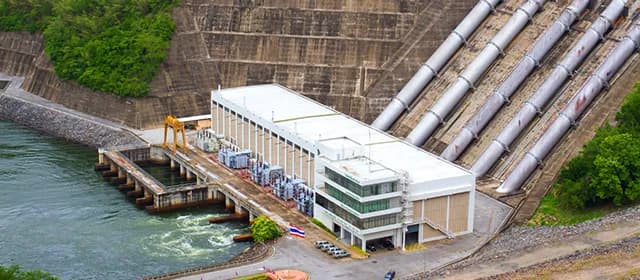The oilfield services (OFS) sector confronts significant transformation driven by shifting energy policy, evolving demand patterns, and accelerating digital innovation. Historically rooted in supporting upstream exploration and production, OFS firms now face pressure to adjust business models, embrace low-carbon technologies, and deliver data-driven efficiency. This analysis examines the drivers of change in the industry, outlines adaptation strategies pursued by leading players, and assesses risks and futures.
Kings Research estimates that the global oil and gas market size was recorded at USD 6,923.33 billion in 2024 and projected to reach USD 8,917.40 billion by 2031, growing at a CAGR of 3.68% from 2024 to 2031.
Macro Drivers of Change
Global crude production dynamics influence the demand for oilfield services. The United States set a new crude production record in December 2024 at 13.491 million barrels per day (Source: www.eia.gov). That output surge places pressure on service providers to scale capacity and operate in highly competitive conditions. At the same time, energy transition imperatives increase pressure on OFS firms to decouple revenue from pure hydrocarbon production.
Regulatory frameworks and investor expectations now emphasize emissions, environmental performance, and transparency. Governments are enacting stricter standards for methane emissions, carbon intensity, and decommissioning liabilities. Investors allocate capital more preferentially toward energy firms with clear transition roadmaps. The OFS sector must respond to those external pressures or risk obsolescence.
How Oilfield Service Firms Are Diversifying into Low-Carbon and Digital Solutions
Diversification into Low-Carbon and Energy Transition Services:
Some OFS firms reposition through expansion into adjacent areas such as carbon capture, geothermal, hydrogen, and offshore wind support. This shift allows retention of technical and operational expertise under new energy mandates. Firms that integrate transition services can mitigate exposure to downside in oil cycles.
Digital Transformation and Automation:
Digital technology now forms the backbone of operational differentiation. SLB introduced AI-driven geosteering under its Neuro autonomous drilling solution to optimize well placement and reduce inefficiencies (Source: slb.com). The firm also launched its Stream high-speed intelligent telemetry offering to deliver real-time downhole data using advanced AI algorithms. Such platforms reduce nonproductive time and improve drilling accuracy.
Co-development partnerships illustrate another path. SLB formed a long-term collaboration with Aker BP to co-develop an AI-driven digital platform that transforms subsurface workflows toward greater efficiency and lower cost. Integration of cloud, computing power, and algorithms becomes crucial to supporting complex decision-making in unconventional reservoirs.
Integrated Service Contracts and Risk Sharing:
OFS firms now compete to gain integrated service contracts that shift more risk onto the provider. SLB secured a contract with Petrobras for integrated services across Petrobras’ offshore fields in Brazil, covering deepwater and ultra-deepwater wells under a single mandate. Providing full suites of drilling, fluids, cementing, and completion allows vendors to capture more value and strengthen strategic partnerships with operators.
Joint ventures also emerge as pathways for shared risk and asset access. SLB joined with ADNOC Drilling in a partnership focusing on unconventional oil and gas development in the UAE. That joint venture aligns capital, regional access, and technological depth.
How Efficiency, Remote Execution, and Digital Twin Technology Drive Operational Excellence
- Emphasis on Efficiency and Cost Discipline: Market cycles swing sharply, so OFS firms emphasize cost control, modular deployment, and lean operations. Standardization of Fleet design, shared services, and asset reusability reduces overhead. Return on capital becomes central to project evaluation. Many firms rationalize underperforming lines and decommission legacy assets.
- Remote Execution and Digital Twin Approaches: Remote operations and remote monitoring reduce onsite dependence and exposure to safety or logistical constraints. Digital twin models replicate physical assets to simulate interventions, pretest designs, and anticipate failures. Such techniques reduce intervention cost and downtime risk.
- Emissions Monitoring and Green ESG Integration: Clients increasingly demand emissions transparency down to the service provider level. OFS firms respond by embedding sensors, carbon accounting modules, and reporting pipelines into service delivery. Lowering carbon intensity of operations, electric pumps, lower methane flaring, and electrification of equipment becomes a competitive differentiator. In its 2024 sustainability report, SLB cites its intent to enable lower-carbon oil and gas production while scaling renewable systems. ESG performance now factors into contract awards and client selection.
What Operational, Regulatory, and Technological Risks Oilfield Service Firms Must Navigate
- Cyclical Demand and Capex Constraints: Oilfield services remain subject to volatile upstream capital expenditures. When oil prices weaken, operators defer exploration or drilling projects. OFS firms that overcommit capacity risk underutilization and margin erosion. Predicting demand cycles remains difficult.
- Skills Transformation and Organizational Change: Transitioning toward digital and low-carbon services demands new skill sets in AI, software, emissions modeling, and project finance. Traditional personnel may struggle to adapt. Organizational inertia and legacy culture may slow transformation.
- Technological Risk and Capital Exposure: Investments in automation, AI, and new energy ventures carry development, adoption, and execution risk. Some platforms may not scale, or client uptake may lag. Stranded assets or technology obsolescence pose financial hazards.
- Regulatory and Liability Uncertainty: Regulatory regimes in different jurisdictions vary significantly. Decommissioning liability, environmental litigation, and evolving carbon pricing frameworks add uncertainty. OFS firms must maintain flexibility in compliance architectures.
Outlook and Strategic Imperatives:
Expect further consolidation and strategic partnerships across OFS, renewable, and technology sectors. Firms that cultivate strong digital platforms, integrate transition services, and secure long-term risk-sharing contracts will gain a competitive advantage. Sustainability metrics will decide capital allocation, and vendors must prove carbon performance to attract investment.
Operators will prefer service providers that offer mechanical services as well as data-driven decision support, emissions accountability, and holistic energy transition capability. OFS firms that stagnate in traditional drilling support risk erosion of relevance. Strategic agility, investments in digital and low-carbon capability, and strong operational discipline define success in the evolving sector.
The oilfield services landscape shifts fundamentally. Adaptation through innovation, diversification, and efficiency offers a path for firms to lead rather than follow in the next phase of energy.




